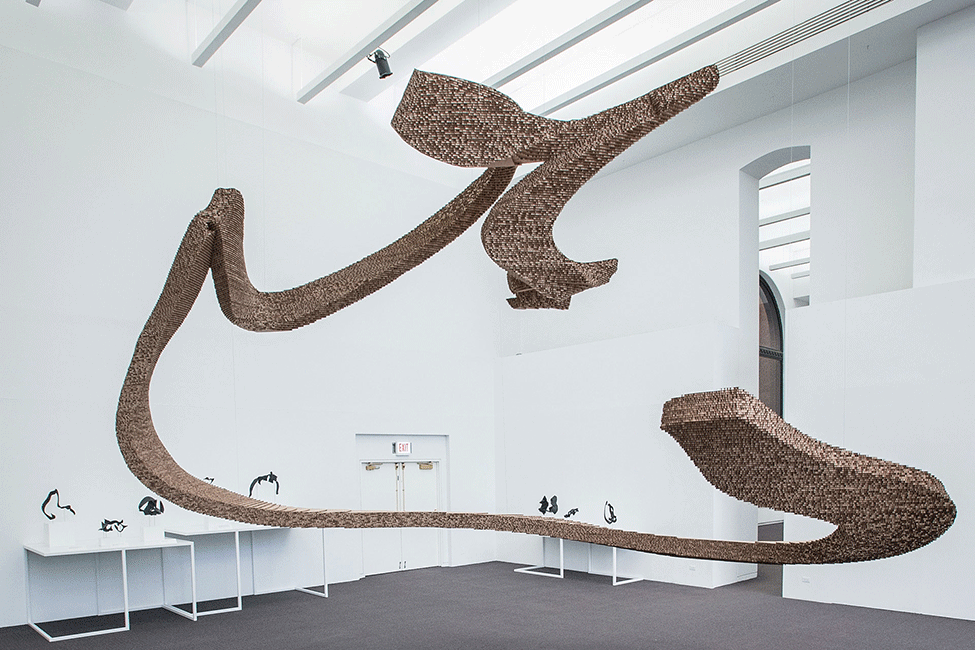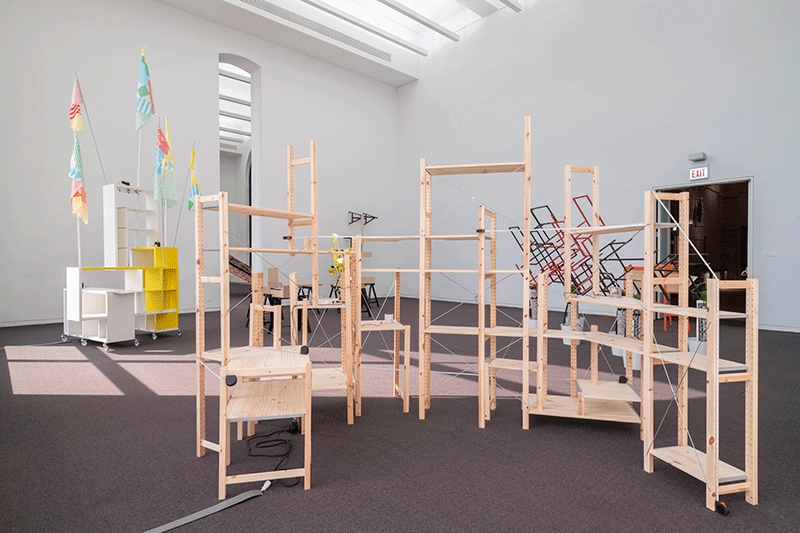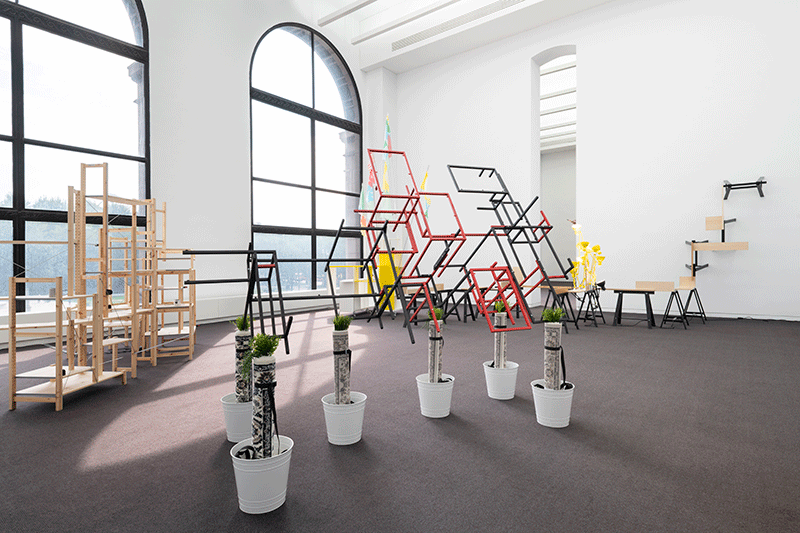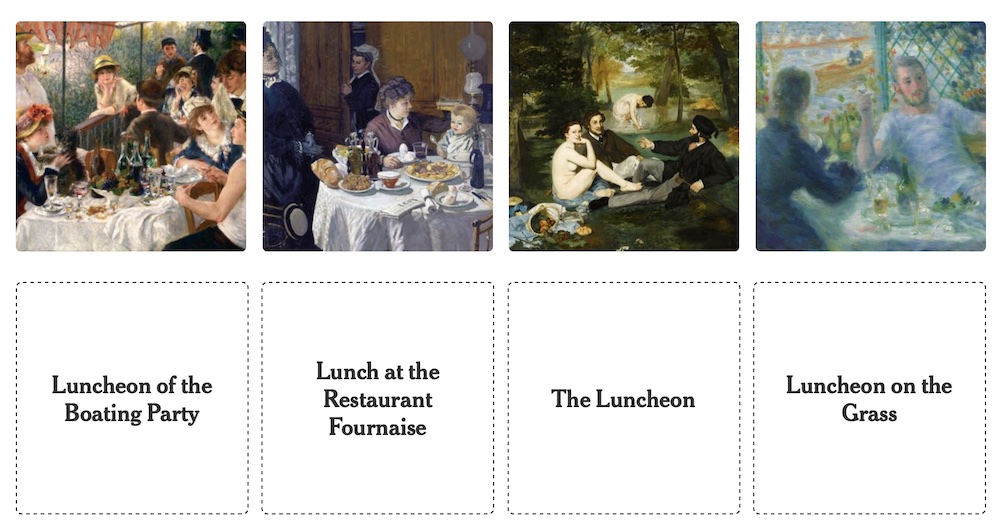Tuned Mass

By FRANCK MERCURIO
The Chicago Cultural Center’s trio of galleries—known as the Chicago Rooms—presents a special challenge for any curator or artist. Works of art can easily “get lost” in these super-tall spaces with their classical proportions and stunning views of Millennium Park. But three artists—Jeff Carter, Faheem Majeed, and Susan Giles—successfully answered the call by curators Greg Lunceford and Lisa McKean to create “an exhibition whose demands exceed the sizeable ones made by the architectural space.” In this adventure Carter, Majeed, and Giles have created works that not only stand on their own inside these three galleries, but also explore different formal and social aspects of the built environment.

Susan Giles
This reviewer first became acquainted with the work of Susan Giles when she was creating small-scale sculptures inspired by architectural icons, including the Arc de Triomphe, Tower Bridge, St. Peter’s Basilica, and the Blue Mosque, among others. She crafted these works from an unlikely duo of materials: paper and concrete. The contrast between the lightweight architectural models (paper) and the weighted, gray bases on which they sat (concrete) captured the “groundedness” of architecture while simultaneously expressing its vulnerability.
Giles’ most recent works continue to be inspired by the built environment, but her forms are less literally architectural. The artist has been observing and videotaping people as they describe the spaces around them—as much with their hands as with their words. She then makes 3D constructions based on her subjects’ fluid arm and hand gestures.
The most monumental of these gestural works is currently installed inside one of the Chicago Cultural Center’s Chicago Rooms. Titled In the Center There Were Librarians, this intricately layered cardboard construction hovers above the spot where a large, round, reference desk once stood when the Cultural Center served as the city’s main public library.
Giles interviewed retired librarian Carolyn Mulac who remembered the original set-up. “[Carolyn] was telling me about this desk,” recalled Giles “and she said ‘It went around like this [using hand gestures] and in the center there were librarians.’”
Giles chose cardboard to make the sculpture, a lightweight material that she and her assistants suspended from the gallery’s ceiling using fishing line. The effect is of a massive sculptural gesture floating in space.
“I 3D scanned [the original model], and I wanted to blow it up,” said Giles, “so you can not only walk up to it, but also enter it.”
Visitors to the exhibition enthusiastically enter and occupy the work, marveling at the intricacies of the sculpture’s construction. SurroundingIn the Center There Were Librarians, the curators include eight small-scale gestural sculptures by Giles, each 3D printed in plastic, presenting a compelling contrast between temporary gestures and permanent materials.

Faheem Majeed
Faheem Majeed’s installation also plays on architectural themes with two large-scale pieces: Board-upand Lean-to.
Both were created using small pieces of found-wood that Majeed and his assistants hand crafted and brightly dyed using Kool-Aid. “All the wood was actually salvaged from my own neighborhood and from previous projects,” explained Majeed. “And the funny thing is, I have an infinite amount of it. So I never run out! [laughs]”
Lean-toreferences the immediate need of shelter and takes up a large area of the gallery. Similar to Giles’ In the Center There Were Librarians,visitors can walk underneath and occupy this large-scale sculpture, which references the simplest of structures: a lean-to. Considering the context of the piece—a building that once housed the city’s main library—it brings to mind (to this reviewer) the homeless citizens of Chicago who often use public libraries as their daytime homes.
Yet despite Lean-to’s monumental presence—and meaning—it is Board-upthat steals the show. Covering one of the gallery’s large, arched windows, the sculpture’s thousands of multi-colored pieces reference a stained glass window—and at the same time, a boarded up abandoned building. The artist’s inspiration came from looking at board-ups on the Southside, which he considers metaphors for both neighborhoods and people.
In making this piece, Majeed relied on a range of sources and inspirations, from Abstract Expressionists—such as Joan Mitchell and Jasper Johns—to the artists of the AfriCOBRA collective (African Commune of Bad Relevant Artists) founded in Chicago in 1968.
“I’m thinking about AfriCOBRA. I’m having conversations with painting. And I started to think about those moments when color theory penetrated my practice,” said Majeed.
Looking at the works of Mitchell and Johns and some of the original AfricCOBRA artists—such as Wadsworth Jarrell and Nelson Stevens—you can see the influence of their vibrant, energetic paintings on Majeed’s art. Yet, Majeed has taken those influences and expanded upon them, making works that are grounded in Modernist color theory, but reflective of the present moment’s concerns. The end result: an art that is relevant and highly engaging to today’s audiences.

Jeff Carter
At first glance, Jeff Carter’s sculptural installations don’t read as political commentary. But his stated influences include the political barricades built by pro-democracy protestors in China.
“I thought about protest barriers: wherever they’re built, they’re very localized,” explained Carter. “[The barriers are constructed with] whatever’s at hand and whatever building methods and materials can be accessed quickly; and so, they’re like a snapshot of the immediate surroundings.”
The ironic thing is that Carter uses Ikea products as his raw materials to make these “barricades”—materials that can be found just about anywhere, in every household and every city where an Ikea store is located.
“Ikea is the same everywhere,” says Carter, “So these sculptures are an attempt to formalize the protest barriers. They’re meant to look haphazard and rather aggressive—and take up a lot more space than they should—but they’re also really precise. There’s a layer of precision hidden inside of the chaos.”

There is something strangely familiar about Carter’s constructions. The elements of each piece evoke furniture design, yet there is no functionality in any of the works. Each piece has an absurdist quality to it. Indeed, a piece like “Occupier”—a bright orange, desk-like form punctured with umbrellas and decorated with flashing lights and siren sounds—evokes Surrealist works of the early 20th-Century.
“As a sculptor, it’s kind of fun and challenging to use [Ikea products] as a raw material,” said Carter. “It’s a highly refined product, so I’m negotiating with the material a lot because of what it wants to do and what I want it to do. Often times I change my ideas and adapt things to make the best use of its characteristics.”
What Carter wanted to do in Tuned Mass was create works that block the pathways of visitors as they walk through the gallery, taking up the curators’ challenge to fill the space while simultaneously exploring architectural themes. Indeed, one of Carter’s stronger pieces, “Occupier 3” not only runs through the gallery, but actually runs up one of the gallery’s walls.
“The curator wanted all the artists in the show to activate the space as much as possible,” explained Carter. “These [works] are all about occupation or occupying space.”
You can see Carter’s “occupying works” as well as those of Majeed and Giles at the Chicago Cultural Center through January 6, 2019, in the Center’s Chicago Rooms located on the second floor.






